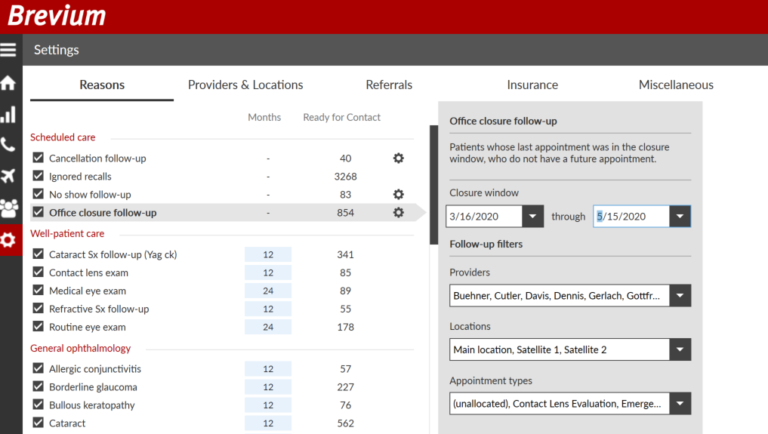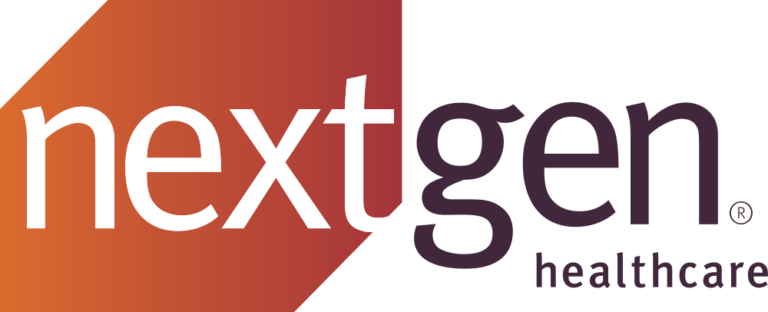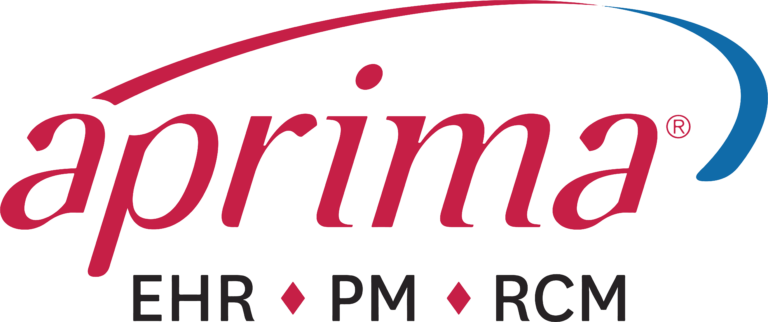The Brevium Blog

Why Your Practice Needs Patient Reactivation Software
Are you out of touch with your overdue patients with no current reactivation strategy to bring them back for care?
Managing a medical practice in today’s modern healthcare landscape can be quite the overwhelming feat. Practice administrators often find themselves balancing multiple tasks, from managing daily operations to developing strategic growth plans—all while ensuring their customers are receiving the highest quality care and patient experience. Perhaps one of the most important tasks for a practice manager is finding and implementing unique digital solutions to streamline administrative tasks, optimize clinic flow and ultimately, drive financial sustainability. Often overlooked compared to more prevalent appointment reminders and patient recall technology, patient reactivation software is the means by which practices can quickly and efficiently reconnect with valuable patients and fuel organic practice growth by returning them for care. Throughout this blog post, we’ll discuss the role of patient reactivation software in improving the financial health of your practice and highlight key features to consider when choosing the right software to meet your practice’s needs. We’ll also explore Brevium’s patented patient reactivation solutions, diving into the software’s unique features that establishes Brevium as the industry’s gold-standard.
What is Patient Reactivation Software?
Patient reactivation software is a comprehensive digital solution purposely created to help medical practices streamline their reactivation efforts and improve patient care. Acting as a “safety net” for when patient recall attempts fail, patient reactivation software integrates with practice management systems to find overdue patients and employ strategies that re-engage them in their treatment journeys. Common features of patient reactivation software include patient segmentation, automated communication, personalized messaging, and reporting tools.
The Hidden Costs of Patient Inactivity
Though patient turnover is a natural byproduct of running a medical business, losing patients to inactivity is costly for medical practices and patients alike. When patients slip through the cracks, providers are not only losing out on reliable revenue opportunities, but they also must find a way to fill those empty appointment slots with new patients. If the practice fails to fill those spots, they end up eating revenue from paying providers and staff for empty appointment slots. Other costs for the practice include:
- Diminished return on investment (ROI) and impacted bottom line.
- Hindered practice growth by decreasing retention rates.
- Decreased overall appointment volume, with increased empty time slots and money left on the table.
- Discouraged patient loyalty and satisfaction.
On the other hand, these lost to follow up patients are no longer in compliance with needed treatment and without this essential care, risk a diminished quality of life or worse, developing chronic disease or disability. By re-engaging these high-risk and high-value patients, practices invite them to once again become proactive participants in their healthcare and engage in preventative treatment vital to their well-being and longevity.
Benefits of Using Patient Reactivation Software
Implementing patient reactivation software comes with many notable benefits that have been proven time again with Brevium’s customers:
Optimizes Practice Efficiency and Productivity
Manual patient reactivation is a tedious process that requires consistent monitoring and continual follow-up. Luckily, patient reactivation software was created to alleviate this burden by streamlining repetitive tasks and automating the entire re-engagement process. Rather than wasting valuable staff time, software like Brevium acts as an extension of your clinic by identifying lost to follow up patients, segmenting them, performing strategic outreach, and evaluating results without your staff needing to log in to the platform. This automated process frees time for your staff to focus on other important tasks without sacrificing their patient reactivation campaign.
Maximizes Revenue and ROI
Patient reactivation software is an invaluable asset for practices looking to fuel organic practice growth and drive greater returns. In fact, Brevium customers commonly report receiving greater returns to their clinic from the unique patient reactivation software than by any other process or technology. Brevium doesn’t just increase appointment volume, but strategically targets high-risk and high-value patients to return for essential exams and procedures—ultimately, enhancing practice efficiency and maximizing revenue.
Measures Success with Data Analytics
Most patient reactivation software have reporting tools that allow practices to track different aspects of their reactivation campaigns. With vast amounts of raw data generated from their efforts, reactivation technology helps medical practices collect, organize and understand this data, offering valuable insight pivotal to optimizing their reactivation campaigns and driving clinic growth.
Improves Patient Compliance and Engagement
Patient reactivation software has the unique ability to send mass communications to strategically targeted patient segments, increasing the odds of them engaging with your practice and scheduling a return appointment; in fact, Brevium tells customers to expect inactive patients on the schedule the very day the software goes live. By prioritizing relevant ICD-10 and CPT codes, Brevium’s patient reactivation software fills provider schedules with high-risk and high-value patients, ensuring optimal care and improving compliance.
How Reactivating Patients Boosts Practice Revenue
Healthcare professionals have long been plagued with finding unique solutions for how to increase patient volume in their clinics. With the rising costs of acquiring new customers, inactive patients represent a huge area of opportunity for practices looking to organically grow their practice and maximize revenue. For many practices, effective patient reactivation often equates to boosted revenue in that their re-engaged patients often require additional appointments, treatments and procedures. In fact, Brevium’s 2019 ALOHA Study concluded that reactivated patients generate (on average):
- $174 on their first return appointment +
- $284 additional revenue over 12 months =
- $458 total revenue upon first return and subsequent visits over 12 months.
Brevium estimates that over 25 percent of patients are overdue from medical practices, with most practices having 1,000 to 2,000 inactive patients per provider. With Brevium expecting new customers to reactivate around 20 percent of their lost to follow-up patient base within 12 months (on average), practices have extraordinary revenue growth potential latent in their overdue patients. By prioritizing patient reactivation and turning these lost to follow-up patients back into loyal, satisfied customers, practices can expect to see greater appointment volume and therefore, greater returns.
How to Choose the Right Patient Reactivation Software for Your Practice
In today’s modern, data-driven healthcare industry, medical practices heavily rely on software solutions to streamline administrative tasks and automate repetitive processes for an optimized clinic flow. With technology playing such a vital role in today’s new healthcare landscape, investing in the right patient reactivation software is an important task that is crucial to your practice’s long-term growth and success. The variety of options on the market can make choosing a software overwhelming, especially considering the significant impact this software will have on your practice’s operations. When shopping for patient reactivation software, there are several key functions to keep in mind:
- Patient Identification & Segmentation: Allows your practice to find and identify overdue patients using unique identifiers or segments (i.e. Reactivating patients who have unremoved cataracts who have not been seen in over 12 months, with no future appointment or recall).
- Automated Patient Outreach: Automates the patient outreach and follow-up process, allowing your practice to send timely, relevant mass communications without disrupting your daily workflow.
- Personalized Communication: Provides customizable templates that allows practices to remain personal in patient communications while streamlining the time-consuming outreach process.
- Multi-Channel Communication Methods: Utilizes more than just text and email in the outreach strategy, but rather a variety of outreach methods that ensures patients will receive at least one of your contacts.
- Advanced Reporting & Analytics: Tracks and compiles data from your reactivation efforts into digestible reports that help your practice understand the state of its patient reactivation campaign. This data and the insight garnered will ultimately be the means by which you make important decisions regarding practice growth.
Why Customers Choose Brevium First
With over 20 years of experience helping practices realize the untapped value in their own databases, Brevium offers a unique solution to patient engagement that no other software can match. After seamlessly integrating with your practice management system, Brevium strategically engages your highest priority patients using data-backed outreach methods to efficiently fill provider schedules and fuel organic practice growth. While Brevium implements the above features in its patient reactivation strategy, what sets the technology apart lies in the details. The following are a few ways Brevium’s patented reactivation software elevates your practice’s efficiency and profitability:
- Mines your database using unique patient identifiers, including ICD-10 and CPT codes.
Most patient reactivation technology only uses appointment history or last treatment date to identify lost to follow-up patients, meaning your practice has a limited ability to reactivate according to specific needs or goals. Rather, Brevium employs its patented data mining tools to find patients not only based on demographics or appointment history, but also billing history, insurance carrier, treatment location, provider, and most importantly, disease state. By prioritizing overdue patients based on disease state and insurance acceptance, Brevium ensures your empty appointment slots are filled with your highest priority patients.
- Implements six different outreach methods into its patient reactivation strategy, ensuring your practice meets its overdue patients where they are.
Brevium’s previously mentioned ALOHA Study concluded that texts and emails were the two least effective contact methods for reactivating lost to follow-up patients, and yet most other patient reactivation software exclusively use these channels in their strategies. With the healthcare technology boom in recent years, most practices assume they can reach all their patients through these outlets; however, factors like patient demographics, socioeconomic status and outdated information mean that not all patients have text-friendly phone numbers or reachable emails. In fact, Brevium found that 30 percent of your lost to follow-up patient base will go uncontacted with texts and emails as the only communication methods. For this reason, Brevium incorporates these automated outreach methods in tandem with channels that have a higher reachability (i.e. staff calls, autocalls, postcards, letters), finding that using even three different contact options reaches more than 95 percent of your lost to follow-up patients.
- Measures practice success through advanced, detailed reporting tools.
Brevium has a saying that, “Any software worth the investment will show you how it earns its keep.” Brevium’s software does just that through its advanced reporting tools that allows practices to track key growth metrics and evaluate the effectiveness of any given step in the patient reactivation process. While other software solutions may have reporting features, no other software does patient reactivation reporting like Brevium’s state-of-the-art software. Here are two unique ways Brevium can report on the success of your reactivation campaign:
- Busyness Report: This comprehensive report provides in-depth analysis on the “busyness” of your providers, allowing your practice to use concrete data to optimize provider scheduling and increase profitability. By linking to your practice management system, Brevium can analyze (by provider): weekly appointment volume, new patient ratio, no-show rates, average time between scheduling and appointment, overbooking statistics, and appointments per hour. With this impartial data, medical practices can make educated decisions on how to increase patients in clinic and improve scheduling efficiency.
- Enterprise Reporting: This dashboard specifically benefits large organizations or private equity groups that need a comprehensive view into the success of their business. Combining the data generated from all practices within the organization using the software, Brevium provides complete reports that are easily accessible from the Dashboard—meaning administrators don’t need to log in to each practice’s individual system to see the results.
- Uses Brevium Stitch to grow with medical practices through organizational expansion.
Many healthcare professionals wonder how to grow a medical practice or expand their clinic’s reach without losing valuable patient data, as switching practice management systems is one of the biggest reasons that practices lose priceless patient information and ofttimes, the patients themselves. Missing or partial data only slows your patient reactivation efforts, resulting in loss of patients and revenue for your clinic. With the Brevium Stitch, the software will “stitch” or merge your old database to the new, creating one seamless file of patient history necessary for effective patient reactivation. Rather than just patient name and demographics, practices will have access to entire patient histories, including disease profile, appointment history, billing history, treatment location and provider, insurance, and much more.
https://youtu.be/3GEEvtXu0zA (video on the Stitch)
Real-Life Success Stories
One of the more noteworthy testaments to Brevium’s impact is its work with Platinum Dermatology Partners—a renowned physician services organization that strategically partners with top dermatology clinics across the country to provide high-quality tools, resources and support vital to sustainable organizational growth and profitability. Through their partnership with Brevium, Platinum was able to redefine growth and practice profitability in their merger with West Dermatology—a 19 brand, 154 provider organization that had untapped revenue potential with its inactive patients.
Before West Dermatology partnered with Platinum, they utilized a software that had similar features and functions as Brevium. However, Platinum’s Chief Operations Officer Grizelda Altamirano couldn’t trust the software’s ability to provide accurate, updated conversion rates and financial results. Having worked with Brevium in other specialties before joining Platinum, Altamirano was confident in Brevium’s ability to generate greater returns, knowing that even a one percent difference in conversion rates with a large organization like West Dermatology would translate to boosted revenue and an improved bottom line. After going live with Brevium in late June 2023, West Dermatology experienced these incredible results in only six months:
- 32,736 appointments scheduled.
- 21,605 appointments kept (at that point in time).
- 4,500 reactivated patients per month on average from October to January.
- $3 million in additional revenue generated solely from reactivated patients.
- 24.4x return on investment—meaning for every dollar spent on Brevium’s solutions, the organization received $24.40 in return.
- Six Brevium Stitches completed in six months, merging multiple practice management systems to one central system to create one seamless file of patient history.
Conclusion
Consider elevating patient engagement in your clinic with Brevium’s patented patient reactivation software. Our extensive digital solutions, including proprietary data mining tools, automated multi-channel outreach, advanced data analysis, and innovative Brevium Stitch technology, ensures enhanced patient care for your overdue patients and boosted revenue for your practice. With your specific goals in mind, Brevium will design a unique patient reactivation strategy that not only meets your needs but surpasses expectations. Boost your appointment numbers and maximize revenue with Brevium today!














